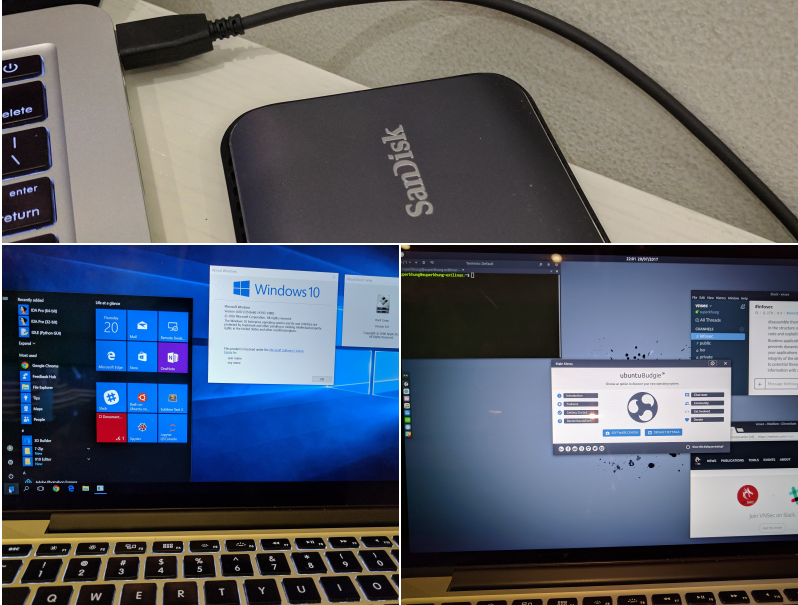
- #MAKE A BOOT UBUNTU USB FOR MAC ON WINDOWS HOW TO#
- #MAKE A BOOT UBUNTU USB FOR MAC ON WINDOWS PRO#
- #MAKE A BOOT UBUNTU USB FOR MAC ON WINDOWS ISO#
- #MAKE A BOOT UBUNTU USB FOR MAC ON WINDOWS DOWNLOAD#
- #MAKE A BOOT UBUNTU USB FOR MAC ON WINDOWS MAC#
I’ve circled my one on the left hand side. When you launch the app, find the USB stick icon.
#MAKE A BOOT UBUNTU USB FOR MAC ON WINDOWS MAC#
Launch that App, and you’ll see something similar to the below screenshot: Mac Disk Utility In Utilities you’ll find an Apple app called ‘Disk Utility’. To initialise your USB stick, go to your Applications menu. It’s commonly known as ‘Formatting’, but those Cupertino Cliques like to call it ‘Initialise’ instead 🙂 Regardless of whether you have a blank USB stick, or one with lots of files, you are going to need to completely erase the contents of it. It’s time to pop your USB stick in your Mac. If you are downloading Ubuntu, you can get it here: Step 2: Erase / Format / Initialise your USB Stick
#MAKE A BOOT UBUNTU USB FOR MAC ON WINDOWS ISO#
This may seem obvious – but just in case you haven’t already downloaded your Linux distro, make sure you grab the right one for your machine (if it’s a new Mac, it’s going to be the 64-bit ISO image – the filename usually ends amd64.iso.

#MAKE A BOOT UBUNTU USB FOR MAC ON WINDOWS HOW TO#
If you want a full tutorial on how to install Linux on a Mac computer, check out our guide. However, this is 2016, and people don’t have CDRW drives any more, so let’s find out how to do this on your beloved mac. USB sticks were more meant to pop regular files onto, not disk images. They weren’t really intended to be put onto USB sticks. In the past, we’d ‘burn’ this image onto a blank CD or DVD. So, just to be clear, you have downloaded Linux (say Ubuntu) from the Ubuntu website. Unfortunately, Mac users have to go through a few more hurdles to get an ISO image onto a USB stick in order to make it boot properly. If you’ve used tools like UNetBootin before, then you’ll have found it a nice easy graphical way on a PC. So, you’ve got a mac computer and you want to put the ISO you just downloaded onto it.
#MAKE A BOOT UBUNTU USB FOR MAC ON WINDOWS PRO#
How I got my job in Linux: from Newbie to Pro.How to install Ubuntu 18.10 on a Macbook Pro.How to install Linux on a Macintosh and dual boot with macOS.Moving to Linux? Bring your Google Drive with you.How to use Google Drive, OneDrive, Dropbox, Amazon S3 and more in Linux.Howto: What is Git and Github? How do I use it and why should I care?.Analysing system performance with ‘Top’.Files, Directories and the Linux Filing System.Chapter 3: Choosing a Linux Distribution.Chapter 2: Why Linux – What’s the Benefits?.Please note that the screen may look different in different systems. Here, you use the arrow keys to move down to USB option and press enter to boot from the USB. In the BIOS settings, normally, you should see a screen like this. In some rare cases, you may have to access the UEFI boot settings from within Windows. Quickly press F2, F10 or F12 keys at the screen showing your system manufacturer’s logo Some may even use Esc or Del keys for this purpose. This key is different for different brand of computers. But be quick when you do that otherwise it will boot into the operating system. You may try pressing all of them one by one if you are not sure of the key. What you need to do is restart or power on your computer.Īt the screen that shows the logo of your system manufacturer, press the F2 or F10 or F12 key. Plug in the live USB on the desired computer. The bootable USB can be used on any system, not only on the one where you created it.

Once the live USB is created, you can proceed with testing Ubuntu in live mode.
#MAKE A BOOT UBUNTU USB FOR MAC ON WINDOWS DOWNLOAD#
Go to the project website and download the latest version of Universal USB Installer. Method 2: Using Universal USB Installer for making bootable Linux USB Let’s see another method of creating bootable Linux USB. I’ll show you how to boot from the live USB in a moment. You’ll see a green signal when the live USB is ready. It will take a few minutes to complete the process.

You may be asked to choose how to write the image. Based on that, select the Partition Scheme and Target System in Rufus.Įverything looks good? Hit the START button. I hope you have checked the partitioning scheme and BIOS type as I mentioned in the prerequisite section. If not, you can always browse to the ISO by clicking on the SELECT button. It may also automatically find the Ubuntu ISO. If there are more than one USB keys plugged in, please ensure to select the correct USB under Device. When you run Rufus with the USB plugged in, it automatically recognizes it. Now double click on the download Rufus exe file which should be in the Downloads folder. Plug in your USB key (pen drive) to the computer.

This is an exe file so you do not need to install Rufus.


 0 kommentar(er)
0 kommentar(er)
